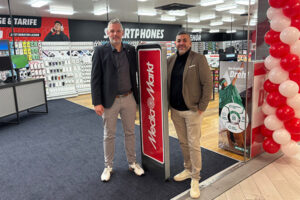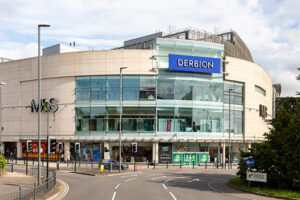BY JÖRG F. BITZER
The shop-in-shop structure of department stores is overshadowed by the concept of large-scale shopping centers. The term “department store” is often meaningless to today’s young people.Large takeovers are already taking place in the German department store market. The department store giant Hudson’s Bay acquired Kaufhof, dashing plans for a merger with Karstadt. Hudson’s Bay, which successfully runs all Sacks Fifth Avenue department stores, has an international reputation and will certainly bring changes with it.
The Signa Group has meanwhile also sought an international partner. The originally Italian department store operator La Rinascente can now look forward to a majority stake in the KaDeWe Group. La Rinascente is in the hands of the Thai company Central Group. The aim of both acquisitions was the entry into the European market. Further acquisitions of competitors are not out of the question.
Typical for the heart of EuropeEurope, traditional department stores are losing traction. For example in Austria, only Steffl in Vienna’s city center, Gerngross in Vienna’s newly pedestrianized Mariahilfer Straße, and Kastner&Öhler, headquartered in Graz, have nationwide appeal. The typical Middle European prefers shopping streets, arcades with many stores, and shopping malls, which has a negative effect on department store sales. To stay with the example Gerngross, it, like Steffl, has recognized the trend towards shopping centers and adapted the original shop-in-shop concept, taking on shopping center-like structures.
There are many reasons why the department store is no longer as attractive for consumers as in the past decades. The sales structures have changed for the retailers themselves, too. Retailers now prefer to distribute their products in their own stores rather than having to share a crowded sales area with competitors. From the procurement of goods to product presentation and marketing, retailers can control and fine tune everything at their own locations.
Online retailing has also had a negative impact on department stores. The consumer of today is mobile and can often shop more quickly and easily on the internet than in a department store crowded with other consumers, especially during high seasons like Christmas. In terms of consultation, the bricks-and-mortar trade is still a little ahead of the internet trade – except that the competent staff actually required is increasingly unaffordable due to declining sales at department stores.
Larger department store providers like Galeria Kaufhof and KaDeWe, in Germany, or Vroom & Dreesman in the Netherlands, could previously offer the entire range of goods from the retail market, but the breadth and depth of offerings required nowadays means this approach is no longer sustainable. What department stores offer is anyway also offered by shopping malls, but with the added expertise of the range specialists.
The number of customers still unused to shopping per-I-phone is slowly shrinking and department store managers have to start thinking seriously about the future. Centrally controlled ranges no longer work. Each site has to differentiate itself according to demand for its products. Consumers in cities are looking for local shops for everyday needs, but on the outskirts, diversity and the shopping experience are the focus, two things department stores are increasingly unable to offer.
There are some positive examples, too, however, like the British department store group Marks & Spencer’s success with the strategy “Brit Chic” in the UK. Its over 800 stores, including 450 outside the UK, have managed to record a slight increase in sales. That means department stores may continue to succeed in the future with an exceptionally good strategy that covers both the demand for products as well as the shopping experience for end consumers. This can only happen if operators remember that customers today have become mobile, flexible, and thus unpredictable.
What is your opinion on this topic? Discuss it with us! Send your opinion to opinion@across-magazine.com !






